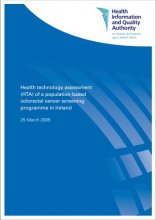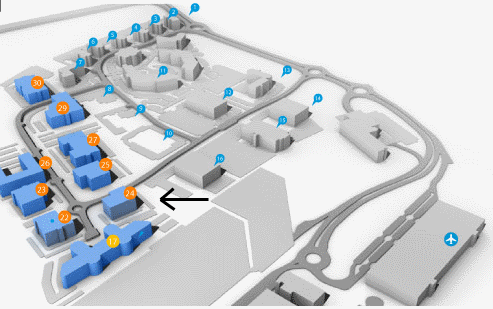Current Size: 100%
Cost-effectiveness of options for a colorectal cancer screening programme in Ireland

A proportion of colorectal cancers are preventable through screening. Several screening tests are available, each with their own strengths and limitations. Cost-effectiveness analysis provides a methodology for comparing the costs and benefits of alternative healthcare interventions.
The National Cancer Registry, in collaboration with ScHARR at the University of Sheffield and the National Centre for Pharmacoeconomics, undertook a cost-effectiveness analysis of colorectal cancer screening options in Ireland. Three screening scenarios were evaluated:
(1) biennial faecal occult blood testing in the 55-74 age group
(2) biennial faecal immunochemical testing in the 55-74 age-group
(3) once-only flexible sigmoidoscopy at age 60.
An economic model developed by ScHARR was adapted for the Irish setting and populated, as far as possible, with Irish data. Costs incurred by third party payers (i.e. the health services) were considered.
The analysis found that all screening options were considered highly cost-effective compared to no screening. Flexible sigmoidoscopy had the lowest incremental cost-effectiveness ratio. However, faecal immunochemical testing was associated with greater gains in quality-adjusted life years and reductions in lifetime cancer incidence and mortality. Therefore, screening based on biennial faecal immunochemical testing in people aged 55-74 was considered the optimal option.
The results of this evaluation informed the advice from the Health Information & Quality Authority to the Minster for Health, and the ultimate decision to implement BowelScreen.
- Using resource modelling to inform decision making and service planning: the case of colorectal cancer screening in Ireland
- Cost-effectiveness of population-based screening for colorectal cancer: a comparison of guaiac-based faecal occult blood testing, faecal immunochemical testing and flexible sigmoidoscopy
- Cost of care for colorectal cancer in Ireland: A healthcare payer perspective





